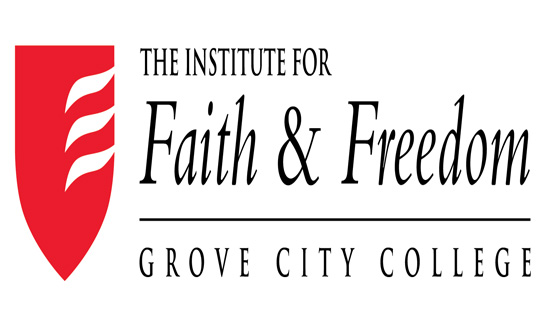Is there a Biblical Approach to Population?

The May 15 issue of the Wall Street Journal featured a story about the U.S. birthrate dropping to 1.7 children per woman. This is the current endpoint from a steady decline in birth rates since the peak baby boom years around 1960. It is a new low. Our country has tended to bounce around 2.1 children per woman the last few decades, often below the generally accepted 2.1 replacement level, the breakeven rate required to sustain a population. Given that U.S. immigration has always outstripped emigration, U.S. population continues to grow even as birth rates fall below 2.1.
As a matter of cultural health, what does it say about a generation that fails to reproduce itself? This situation is by no means unique to the United States. Every country with a developed economy, west or east, north or south, is failing to replace itself—or is barely at replacement levels. The numbers vary from source to source. Italy is reported by the WSJ at 1.3, or perhaps 1.5, as suggested by World Population Review. Either way it doesn’t look good for Italy. Demographers say that without immigration citizens of societies with this range of birth rates will see their last member die without a mate in few centuries. This includes all the counties of Europe and the developed Far East.
The European Union birth rate is thought to be about 1.6, with several Mediterranean countries closer to 1.3. In East Asia, Japan is around 1.5, Taiwan tanks at little over 1.2, and China at 1.6 continues to project a decline despite the recent relaxing of its coercive one-child policy. In fact, worldwide, birthrates are declining even in those counties that exceed replacement birth rates. Immigration from countries in Latin America and the Islamic world are not driven by population pressure. Rather, it is the unbearable political and social situations that are causing the citizenry to scatter.
The question is, will the at-risk populations be able to turn it around? Fertility incentives like those in France, Sweden, and China, are seldomly responded to in our modern age. Will countries with developing economies and declining birth rates be able to stop the skid before they plummet below the replace rate? What is it about profound affluence that makes a society reproductively self-destructive? Why is it that, on average, the best educated people, certainly the better-educated women, fail to engage in sustainable reproductive effort?
The concerns among secularists like Paul and Anne Ehrlich regarding worldwide burdensome population growth, articulated in their 1968 book the Population Bomb, have largely failed to materialize as economies have grown and world health has improved. Modern birth rates and global economies show that the Ehrlich’s “cancer of population growth” has failed to metastasize.
The sleeper in the global trend is the reproductive ethic seen among the world’s practicing theists, such as conservative Catholics and evangelical Christians, Orthodox Jews, and Muslims. It is from these that the reproductively self-destructive movements must recruit if they are to sustain themselves. Even so, these theists are influenced by the cultures they find themselves in and are at times nearly indistinguishable from their greater cultures. For example, conservative Protestants and Catholics birthrates are about 2.5 and 2.7 respectively, down in both populations from over 2.8 for both populations in the early 1970s. Birth rates are lower with Orthodox Jews, but trends are similar.
Yet anecdotally, there seems to be subcultures within these subcultures that have embraced a more robust reproductive ethic. The divine call in Genesis to “be fruitful and multiply” is taken seriously by many, even if they are a minority. The promise of the blessing of children and family is heard over the cultural clamor and clarion call of personal peace and prosperity.
Two decades ago, E. Cal Beisner wisely reminded us in his book Where Garden Meets Wilderness that it is God’s call and desire to bless us with children, especially our children as His children. The situation is recalled by considering Abraham and Lot after their separation. Lot chose the fertile lowlands around Sodom, while Abraham took what was left over, the more ecological marginal upland of the Levant. It was there that the Lord said he would bless him by making him a great and mighty nation, whose seed would bless the world. Lot’s prognostication of economic wellbeing and the future was not realized. Actually, it backfired.
Notice that the Scripture never records an incident of children being a curse, only a blessing. The curse is associated with the denial of children, or their destruction. It is true that they can be inconvenient. Sometimes, I wonder which one of my five progeny has my vehicle. I know I drove it into work. I am in league with the commenter on the WSJ on-line article who said when the kids were gone, “The house is spotless. Boring. Chips go stale. Boring. No one makes cookies. Flashlights work. Pile of shoes on porch is gone. Once weekly forklift loads at Costco have ended.”
If we can’t see the blessings through the inconveniences, the alternative outcome of idolatrous convenience and narcissism is grim. There is a radical message here that we need to convincingly and continually present to those who are our spiritual, intellectual, and, biological charges. The offensive message will only insult those who are foolish.
—Jan Dudt is a professor of biology at Grove City College and fellow for medical ethics with the Institute for Faith & Freedom. He teaches as part of college’s required core course Studies in Science, Faith and Technology wherein students, among other things, study all the major origins theories and are asked to measure them in the light of biblical authority.






